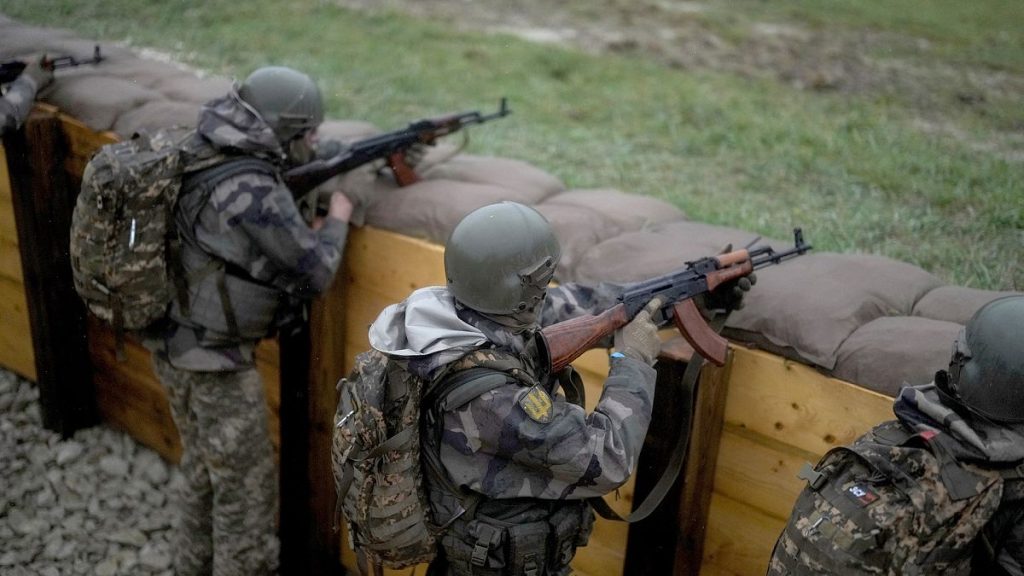Desertions from the 155th "Anne of Kyiv" Mechanised Brigade and the Wider Context of Ukrainian Mobilisation Challenges
The issue of Ukrainian soldier desertions, particularly within the French-trained 155th "Anne of Kyiv" Mechanised Brigade, has surfaced as a point of concern amidst the ongoing conflict with Russia. While French authorities downplay the number of desertions as "very marginal" compared to the total number of Ukrainian soldiers trained in France (approximately 2,300), Ukrainian media investigations paint a more complex picture. Reports suggest up to 50 soldiers deserted from the French training program, a figure that, while proportionally small, still raises questions about morale and the challenges faced by Ukrainian troops. French officials have clarified that they do not criminalize desertion and that Ukrainian soldiers undergoing training in France were subject to the disciplinary code of the Ukrainian command.
The issue of unauthorized absences extends beyond the French-trained brigade. A broader investigation into the 155th Brigade revealed an alarming number of unauthorized absences, with reports indicating as many as 1,700 cases of soldiers going AWOL. This points to systemic issues within the unit’s creation and management, possibly contributing to the high number of absences. Moreover, the problem seems to extend beyond this specific brigade, reflecting wider challenges within the Ukrainian military as a whole. Estimates suggest tens of thousands of Ukrainian soldiers have gone AWOL, a threefold increase in the first nine months of 2024 compared to the same period in 2023. These figures highlight the strain on Ukraine’s military resources and the difficulty of maintaining troop morale in a protracted and brutal conflict.
The Ukrainian Ground Forces Commander, Mykhailo Drapatyi, acknowledged the issue of unauthorized absences as a "significant challenge" and a "negative experience," but emphasized the need to learn from it and implement preventative measures. He attributed the desertions to a combination of fear, particularly among less experienced soldiers facing the reality of combat, and a lack of practical combat experience. This suggests a need for improved training, psychological support, and leadership within the Ukrainian military to address these underlying factors.
In response to the growing number of AWOL cases, Ukraine introduced a new law in November 2024 granting amnesty to first-time deserters who return to service before January 1, 2025. This amnesty aims to encourage soldiers to rejoin their units without facing criminal prosecution, restoring their ranks, benefits, and social guarantees. The initial response to the amnesty has been significant, with reports indicating around 1,000 soldiers returning daily in the days following its enactment. This suggests a willingness among many AWOL soldiers to return to service given the right circumstances, further highlighting the potential impact of addressing the underlying reasons for their departure.
The challenges faced by the Ukrainian military in maintaining troop strength and morale are intertwined with the broader context of the ongoing war and the country’s mobilisation efforts. Ukraine has already lowered the conscription age from 27 to 25 in an effort to bolster its ranks. However, reports indicate that the United States is pressuring Ukraine to lower the draft age further, to 18, a move that Ukrainian President Volodymyr Zelenskyy has resisted. Zelenskyy has instead emphasized the need for increased military aid from Western allies, arguing that current aid levels are insufficient to fully equip the Ukrainian brigades requiring support.
This pressure to lower the draft age underscores the increasing strain on Ukraine’s human resources as the war continues. The debate highlights the delicate balance between the need for manpower and the potential social and political ramifications of further lowering the conscription age, especially in a country facing immense human losses and societal disruption.
The issues of desertion, unauthorized absences, and the surrounding mobilization challenges underscore the human cost of the ongoing war in Ukraine. While the Ukrainian government’s amnesty program represents an attempt to address the immediate problem of AWOL soldiers, the long-term solution likely requires a multifaceted approach. This includes addressing the root causes of desertion, such as fear and lack of experience, through improved training, psychological support, and leadership. Furthermore, securing sufficient military aid and resources remains critical for equipping and supporting Ukrainian troops effectively. Finally, navigating the complex political and social considerations surrounding conscription and mobilisation will continue to be a significant challenge for the Ukrainian government as the war unfolds.
The Ukrainian government has initiated investigations into the issues plaguing the 155th Brigade and announced a comprehensive review of the Ground Forces command, signaling a commitment to addressing the challenges and implementing reforms aimed at improving battlefield effectiveness. This review will assess management structures, processes, and legal compliance within the Ground Forces, seeking to identify areas for improvement and enhance overall operational efficiency. This demonstrates a recognition of the need for internal reflection and structural changes within the military to address the systemic issues contributing to the challenges faced by Ukrainian troops. The success of these reforms, alongside the ongoing efforts to improve troop morale and secure necessary resources, will be crucial for Ukraine’s ability to effectively defend itself in the ongoing conflict.














